Research
Below are the key research themes I work on along with a summary of selected relevant publications.
Clouds & Global Climate Change

Climate models are the primary tool used by climate scientists for climate projections. We used NASA's satellite observations to show that these models may be overestimating the potential of cold clouds containing supercooled liquid droplets and ice crystals to counteract global warming.
Publication:
Tan, I. T. Storelvmo, M. D. Zelinka. Observational constraints on mixed-phase clouds imply higher climate sensitivity, Science, 352(6282), 224-227, (2016). https://science.sciencemag.org/content/352/6282/224
Selected Press Releases:
The New York Times, The Guardian, The Washington Post
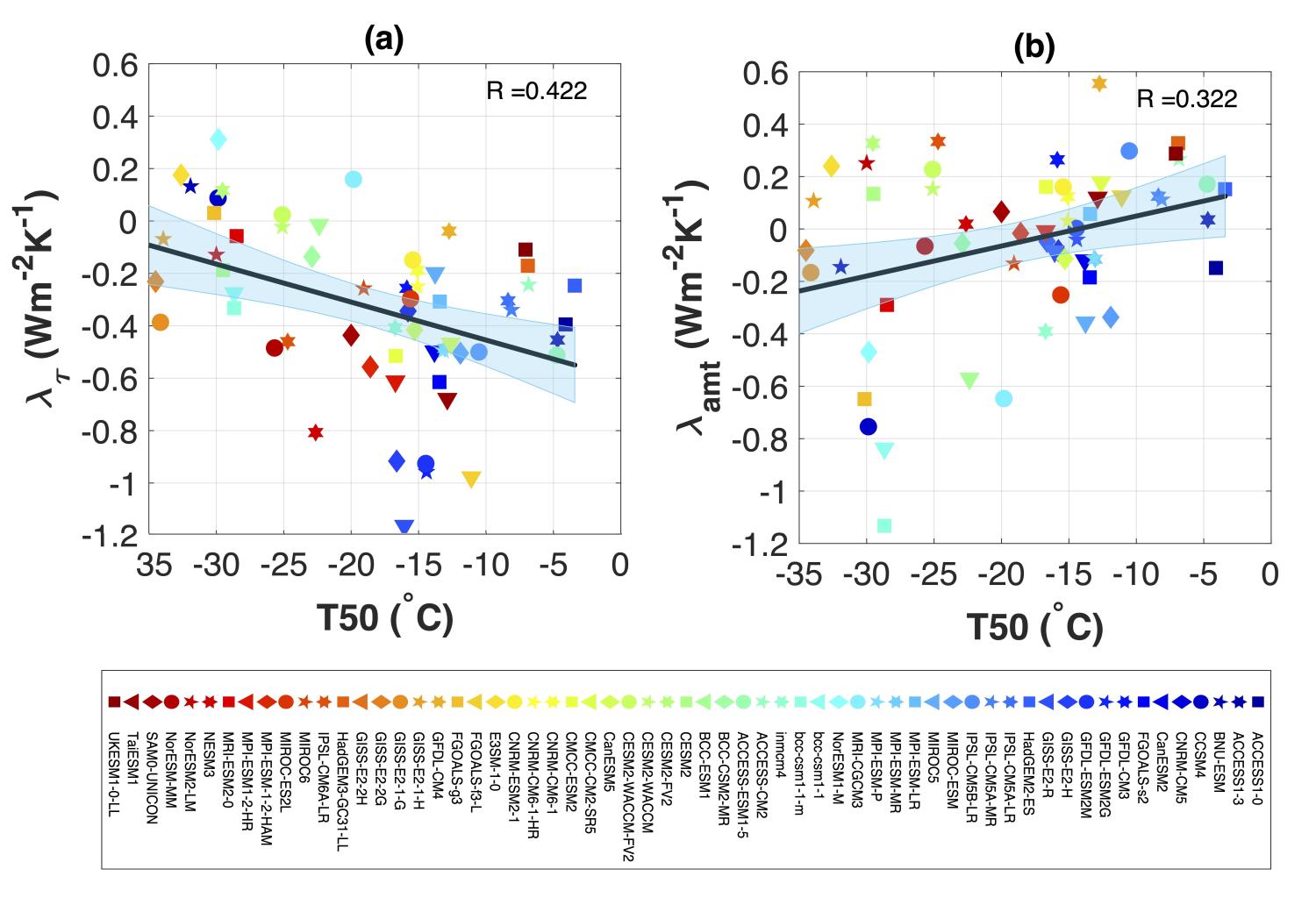
Since Tan et al. (2016) was published, we showed that biases in the representation of cold clouds in some climate models have improved, but they have also been exacerbated in other climate models. Using two opposing relationships associated with cold clouds we found in 61 climate models and observations of clouds obtained by a NASA satellite instrument, we estimated that Earth will warm by ~3.6˚C in response to a doubling of atmospheric CO2 concentrations.
Publication:
Tan, I., C. Zhou, A. Lamy, C. Stauffer. Moderate climate sensitivity due to opposing feedbacks in observationally-constrained mixed-phase clouds, npj Climate and Atmospheric Science, 8(1), (2025), https://www.nature.com/articles/s41612-025-00948-7
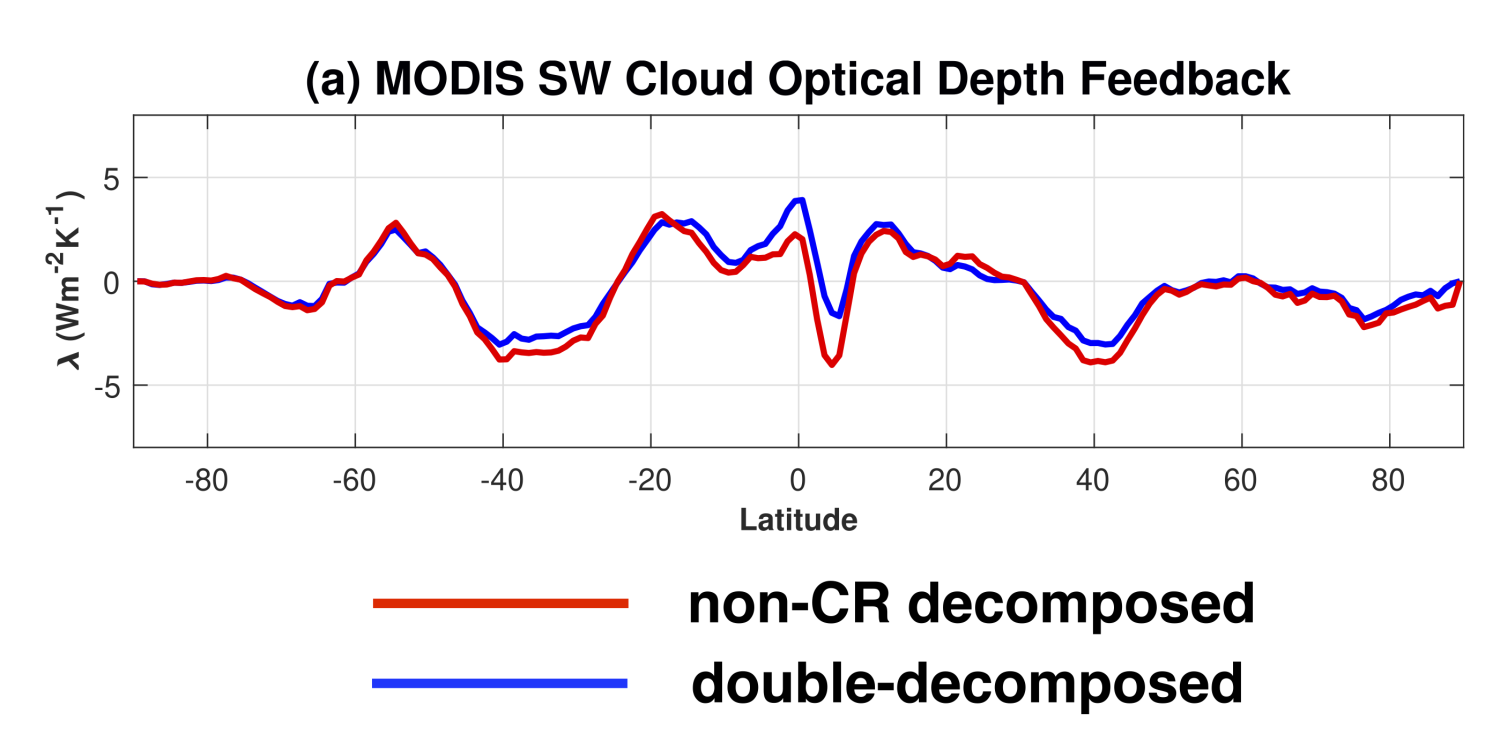
Machine learning can be used to classify clouds into categories or "morphologies" that are dynamically distinct. We developed a new technique to determine how the morphology of clouds evolve as Earth's climate changes. We applied this technique on nearly two decades of stable and well-calibrated observations of clouds obtained from NASA's MODIS instrument onboard the Aqua satellite and found that morphologically thin cloud have been increasing in place of thicker storm clouds over the northern Southern Ocean.
Publication:
- Tan, I. M. D. Zelinka, Q.Coopman, B. H. Kahn, L. Oreopoulos, G. Tselioudis, D. T. McCoy, N. Li. Contributions from cloud morphological changes to the interannual cloud feedback based on MODIS and ISCCP satellite observations, J. Geophys. Res., 129(8), e2023JD040540 (2024), http://doi.org/10.1029/2023JD040540
Clouds & Arctic Amplification
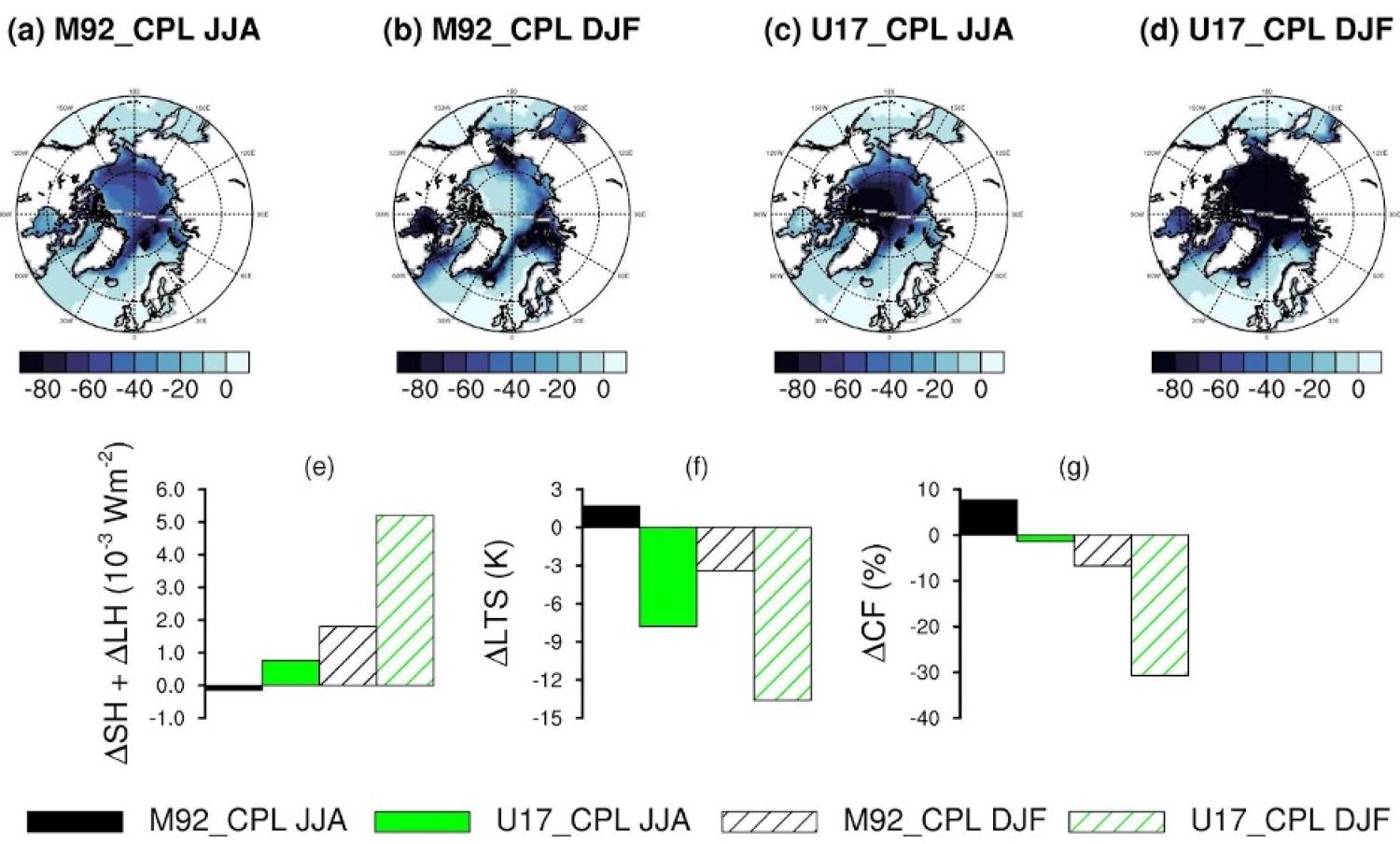
The Arctic is a region of rapid climate change, warming at more than twice the pace of the rest of the globe --- a phenomenon referred to as "Arctic amplification". It is also a region where climate models exhibit the largest spread in projected warming. We showed that climate models that overestimate aerosol particles suspended in Earth's atmosphere that are capable of forming ice crystals in clouds may be underestimating Arctic amplification due to the way the clouds interact with sea ice and the vertical thermal structure of Earth's atmosphere.
Publication:
Tan, I., D. Barahona, Q. Coopman. Potential link between ice nucleation and climate model spread in Arctic amplification. Geophys. Res. Lett., 49(4), e2021GL097373, (2022), https://doi.org/10.1029/2021GL097373

The North Slope of Alaska is home to a suite of eight complementary ground-based remote sensing instruments that provide a perspective for observing low-level clouds that complement satellite observations. We analyzed the long-term record of cloud properties at this Arctic location and determined that a warmer, drier, and more thermodynamically stable environment has been decreasing the coverage, water content, and physical size of ice particles of these clouds with important implications for the region's surface warming trend. The chemical properties of aerosol particles also influence these clouds, with sulphur-based particles primarily influencing liquid clouds and carbon-based aerosol influencing ice clouds.
Publication:
Stauffer, C., I. Tan, S. Matrosov. Aerosol and meteorological influences on mixed-phase stratiform clouds at North Slope of Alaska, 52(11), e2025GL114815, (2025), https://doi.org/10.1029/2025GL114815
Aerosol-Cloud Interactions
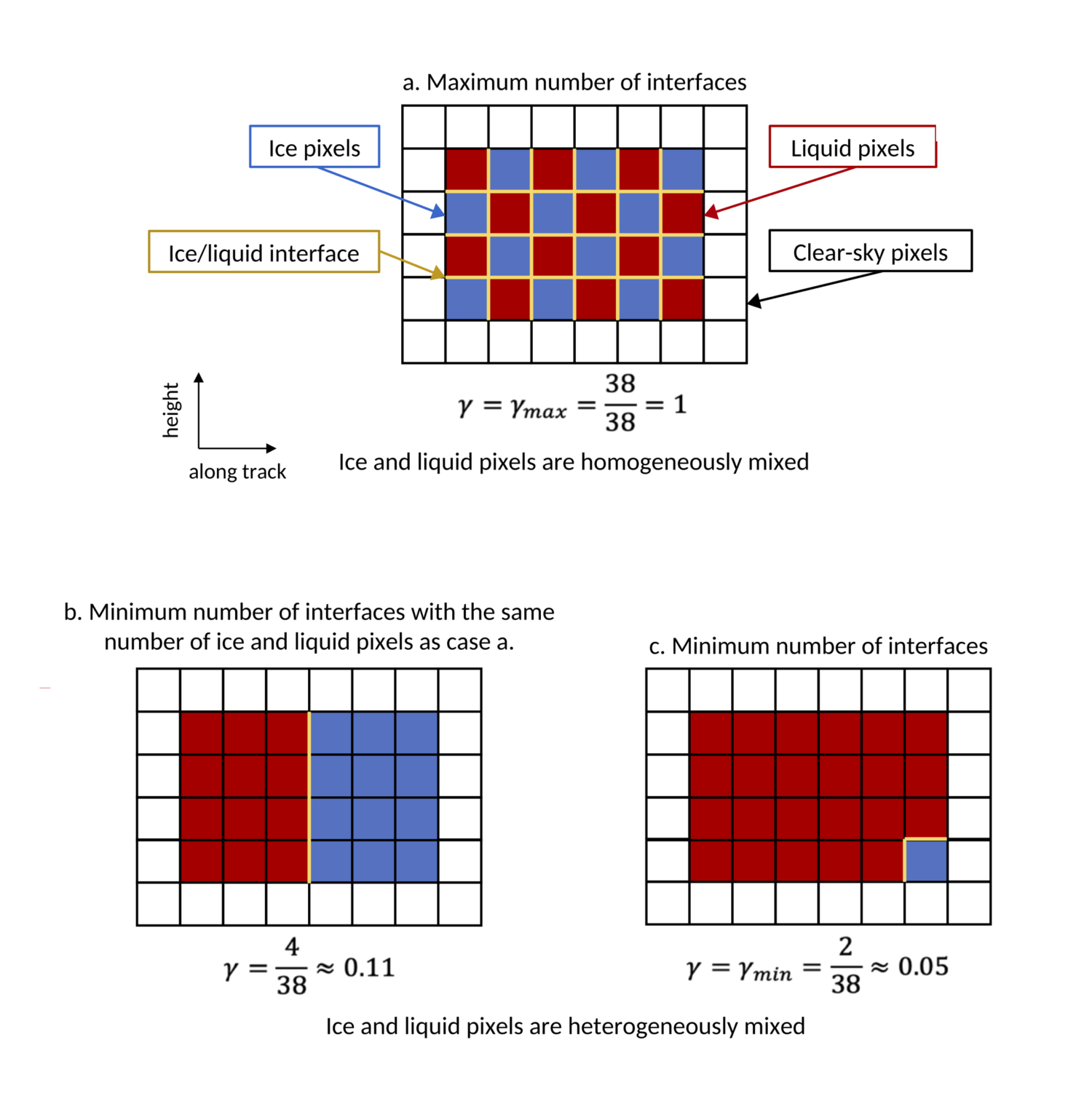
Climate models inherently assume that clouds that contain supercooled liquid droplets and ice crystals are uniformly mixed. In reality, the supercooled liquid droplets tend to form their own clusters separate from those of ice crystals. We used two NASA satellite instruments to quantify the three-dimensional clustering of ice and liquid clusters in cold clouds, with the goal of improving their representation in climate models. We also performed a statistical regression analysis and determined that while temperature plays a key role in determining the structure of these clusters, black carbon aerosols also plays an important role through their ability to nucleate ice crystals in clouds. This sheds light on the long-standing debate over black carbon's ability to nucleate ice in Earth's atmosphere.
Publication:
- Coopman, Q., I. Tan. Characterization of the spatial distribution of mixed-phase cloud thermodynamic phase with satellite observations, Geophy. Res. Lett., 50(24), e2023GL104977 (2023), https://doi.org/10.1029/2023GL104977
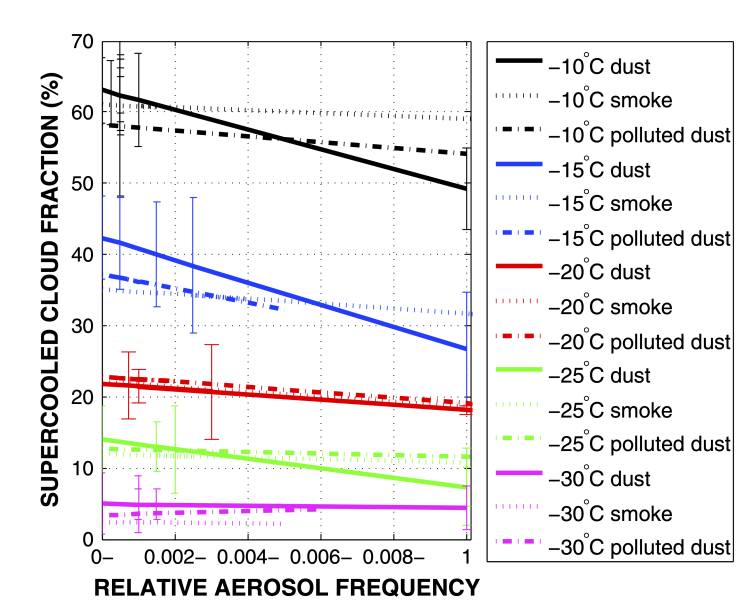
Desert dust is probably the best-understood of all aerosol particles when it comes to its ability to nucleate ice in Earth's atmosphere. However, pollution can coat dust particles and it is unclear whether this renders them less efficient or more efficient at nucleating ice. Using NASA's global satellite observations of aerosol particles and clouds, we found evidence supporting laboratory studies that pollution coatings deactivate the ice nucleation activity of dust aerosols in Earth's atmosphere.
Publication:
Tan, I., T. Storelvmo, Y.-S. Choi. Spaceborne lidar observations of the ice nucleation potential of dust, polluted dust and smoke aerosols in mixed-phase clouds, J. Geophys. Res. 119(11), 6653–6665 (2014). https://doi.org/10.1002/2013JD021333

